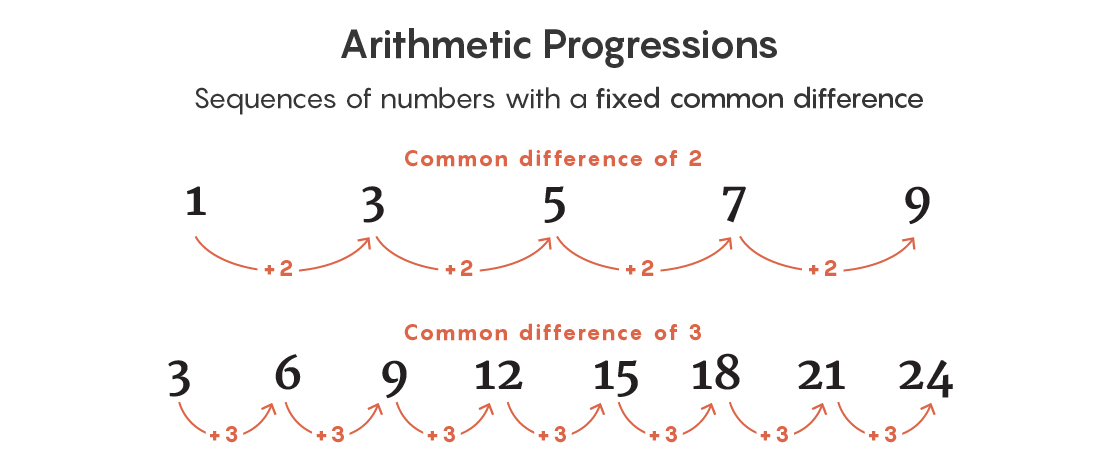Patterns in Mathematics

Number pattern is the most well-known kind of pattern in Maths where a rundown of numbers follows a specific arrangement dependent on a standard. The various sorts of Number patterns are mathematical or arithmetic patterns, Geometric patterns, and the Fibonacci pattern. Let us see the different patterns we usually learn in Maths.
Types of Patterns
Repeating Pattern – The pattern that keeps repeating in a sequence is called a repeating pattern. (For eg: Arithmetic pattern)
Growing Pattern – If the numbers in a pattern are arranged in ascending order or increasing order then it is called the growing pattern. (For example; geometric pattern)
Shrinking Pattern – A pattern where the numbers are arranged in descending order is called the shrinking pattern.
Arithmetic Pattern
An arithmetic Pattern is a grouping of numbers dependent on the addition or subtraction to shape a succession of numbers that are identified with one another. In the event that at least two numbers in the succession are given, we can utilize addition or subtraction to track down the Arithmetic Pattern. We can likewise decide the missing number in a given grouping by utilizing addition or subtraction.
For instance, let us track down the missing numbers in the series: 2, 4, ___, 8, 10, ___ .
In the above pattern, we can see that each number increments by 2. Subsequently, the pattern which is followed for this example is that we add 2 to the past term to get the following term. We can track down the missing numbers utilizing this example. In this manner, the missing numbers are 4 + 2 = 6 and 10 + 2 = 12. Hence, the series is: 2,4,6,8,10,12.
Geometric Pattern
The geometric pattern is an arrangement of numbers that depend on multiplication and division. On the off chance that at least two numbers in the succession are given, we can without much of a stretch, track down the missing numbers in the example utilizing multiplication and division activities.
For instance: 3, 9, 27, ___, 243.
In the given series, it very well may be seen that each number is acquired by multiplying 3 with the past number. Along these lines, the missing numbers can not really settle utilizing this pattern. Hence, the missing number is 27 × 3 = 81. So, the series is 3, 9, 27, 81, 243.
Fibonacci Patterns
The Fibonacci Pattern is a succession of numbers where each number in the arrangement is acquired by adding the two past numbers together. The grouping begins with 0 and 1. Notice this Fibonacci arrangement: 0, 1, 1, 2, 3, 5, 8, 13, etc.
Here, we can see the example that is followed is:
0 + 1 = 1
1 + 1 = 2
1 + 2 = 3
2 + 3 = 5
3 + 5 = 8
5 + 8 = 13
8 + 13 = 21
13 + 21 = 34
And so on.
Conclusion
The patterns can be seen in various mathematical concepts. These patterns can be very helpful to solve complex problems. An example of a pattern is seen in the Factorial concept, where we learn the multiplication of descending order of numbers such that n! = n × (n -1) × (n – 2) × (n – 3) × ….× 1. Hence, it shows a pattern of numbers multiplied in descending order.
The other examples of patterns in Maths are even numbers and odd numbers, where the pattern repeats itself. Here, even numbers are set of multiples of 2, whereas odd numbers are those that cannot be divided by 2. Hence, each of the terms in even and odd numbers is succeeded by 2 with respect to past terms.
Even numbers: 2, 2 + 2, 4 +2, 6 + 2, 8 + 2,…. ⇒ 2, 4, 6, 8, 10, … Hence, there are many applications of patterns in mathematics.







